There is a small green field behind my house. I mean, "field" is probably too big of a word for that thing but I can't find anything better to describe it. Its shape is quadrangular, it looks almost like a perfect square, and is covered with juicy green leaves of the green chicory plants.
The green square is situated in the narrow space between my house and the tall fence wall of the neighboring building, and the cultivar of chicory that grows there ...
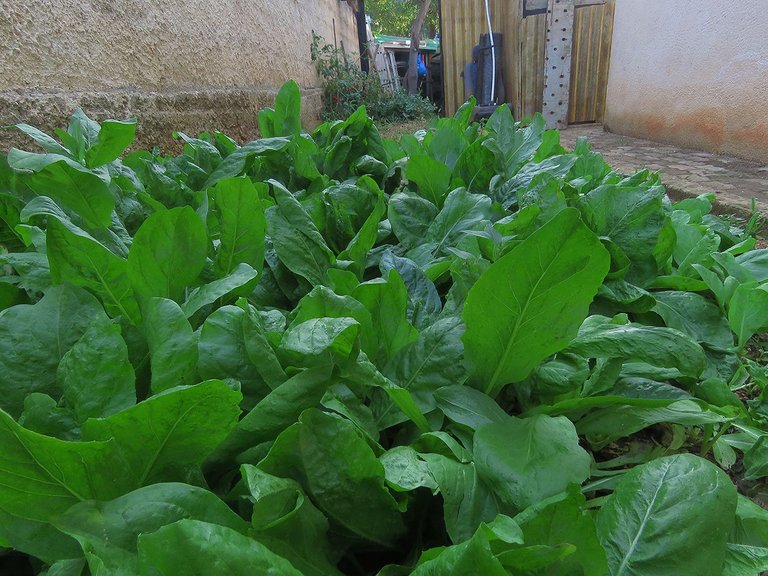
... is known as the "Zuccherina di Trieste." This plant is all about foliage, there are no fruits or flowers to add different colors to the story, so prepare yourself for an overdose of green today.
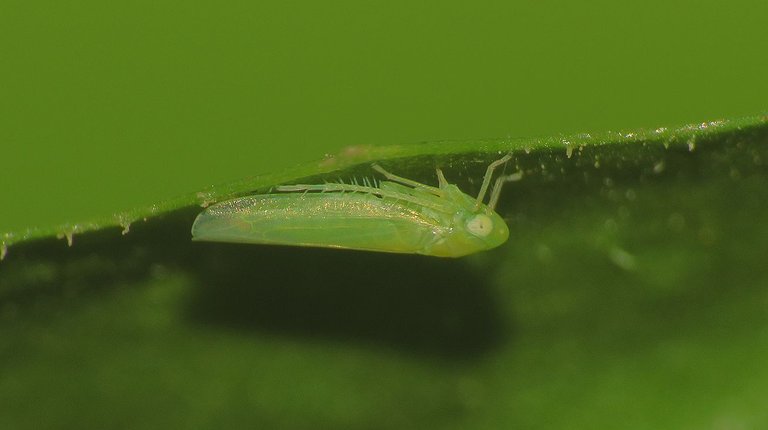
The episode is very literally green like the well-camouflaged leafhopper shown in this and the following photograph.
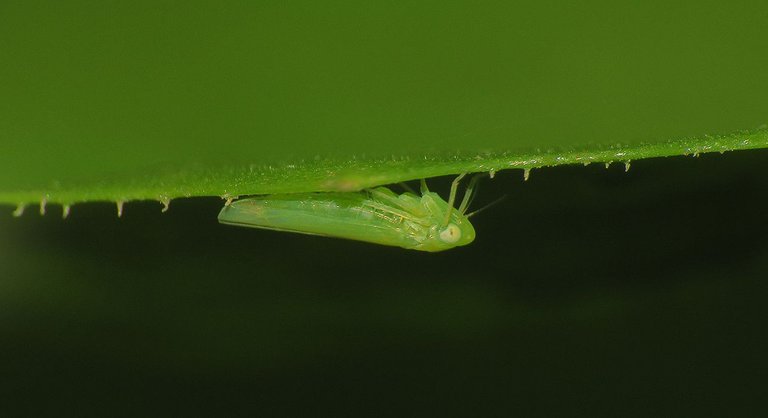
The insect is the same but the background is slightly different in this shot. The name of this species that had a short appearance in the previous episode when it could be seen posing on the upper surface of the Chenopodium album leaf is Empoasca decipiens. In this case, the leafhopper is hiding on the underside of the fairly large chicory leaf.
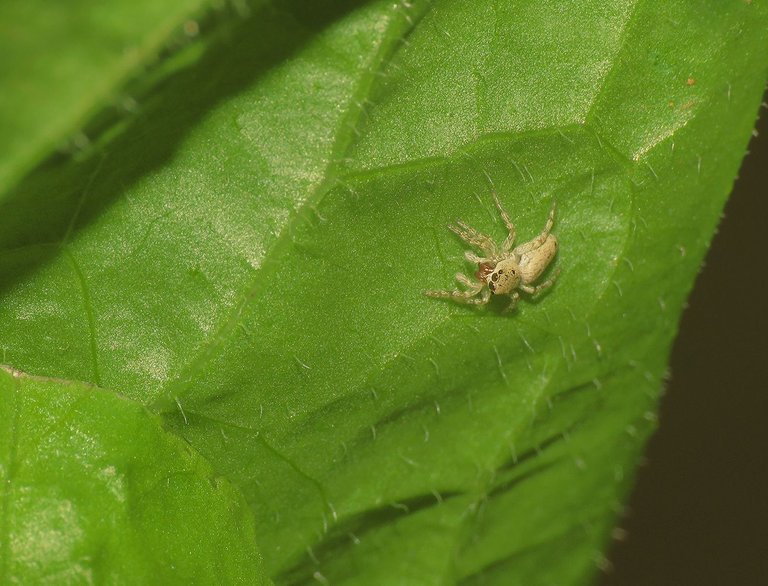
You can see a small jumping spider in this photograph. It appeared from the mysterious depths of the intricate green labyrinth made of many leaves and stopped for a moment in a very visible place not far from the leafhopper I was photographing.
I left the leafhopper and turned my focus to the small arachnid. Following the spider through the macro lens wasn't an easy task, it was constantly moving, observing & exploring - a fast and curious little jumping spider was that, for sure. At some point, the spider disappeared for a minute behind the foliage, and then ...
... returned with a tiny insect in its fangs. If you enlarge the picture by clicking on it, you'll notice the wings of the spider's prey. The insect in question is a whitefly. Can't tell you the exact species but the family is definitely Aleyrodidae. All whiteflies feed by piercing the tissue of the plant and sucking the nutrient fluids. The presence of spiders surely lessens the impact of whitefly activities in the garden.
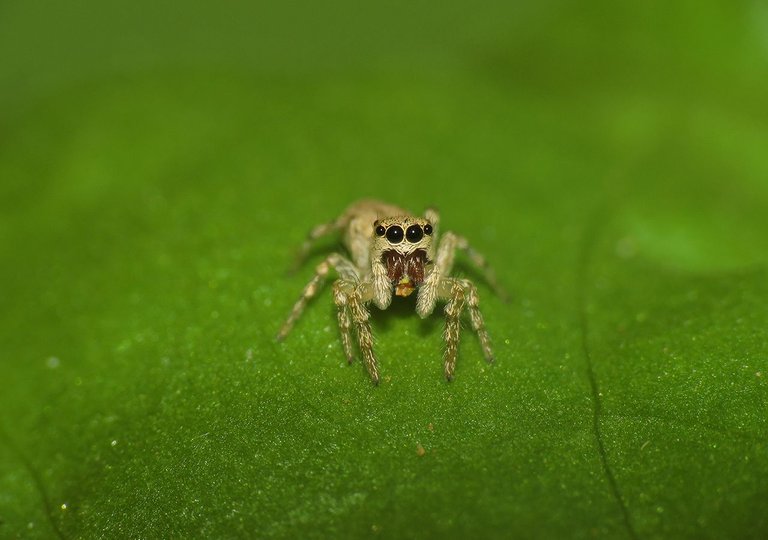
Here you can see the spider looking directly at you with its cute extraterrestrial eyes.
The meal in its fangs was almost completely dissolved and eaten when this and the previous photograph were taken.
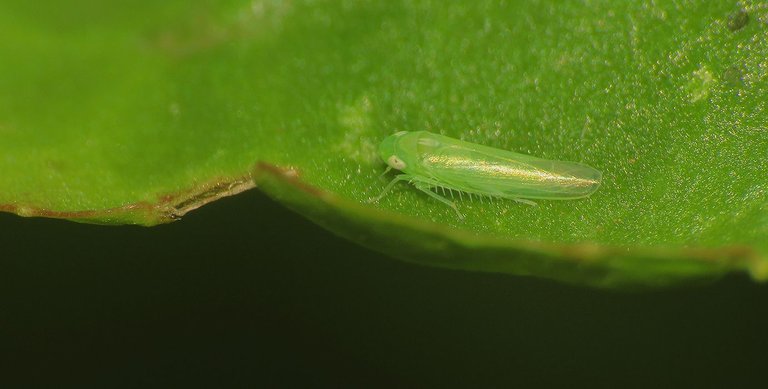
Meanwhile, the Empoasca decipiens introduced earlier in the post has changed its place on the leaf. The leafhopper was on the upper surface now. At some point, the spider came very close, so the leafhopper jumped to the neighboring leaf. In the following photograph ...
... you can see the spider approaching again, more carefully this time. You can also see that the hunter and the hunted are more or less the same size. When it comes to the name of the species, I can tell you that this is the Salticus mutabilis. The color and especially the markings can vary considerably between individuals in this species which can make the identification fairly confusing.
At one point, the spider attacked by jumping directly toward the prey but the leafhopper was faster and so was able to escape.
I followed the spider for a few more minutes and then retrieved back into the house to eat something. The things I saw through the macro lens got me exhausted and hungry.
The next day, I came across a jumping spider with an Empoasca decipiens leafhopper in fangs.
Evarcha jucunda is the name of this considerably bigger species.
This is a female. Males are very different in this species.
Here you can see a tiny fly from the Drosophilidae family. In the following photograph ...
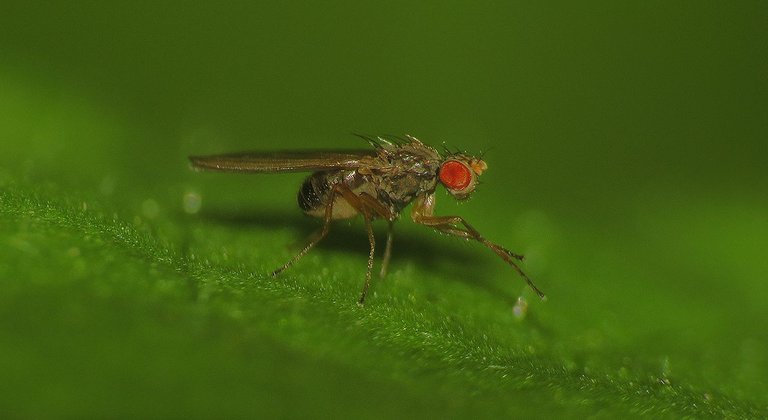
... the same fly is cleaning its forelegs.
The scientific name of the species is Scaptomyza pallida.
These fruit flies were very numerous on the green chicory plants. The fly shown in the following photograph is similar in shape and size, but ...
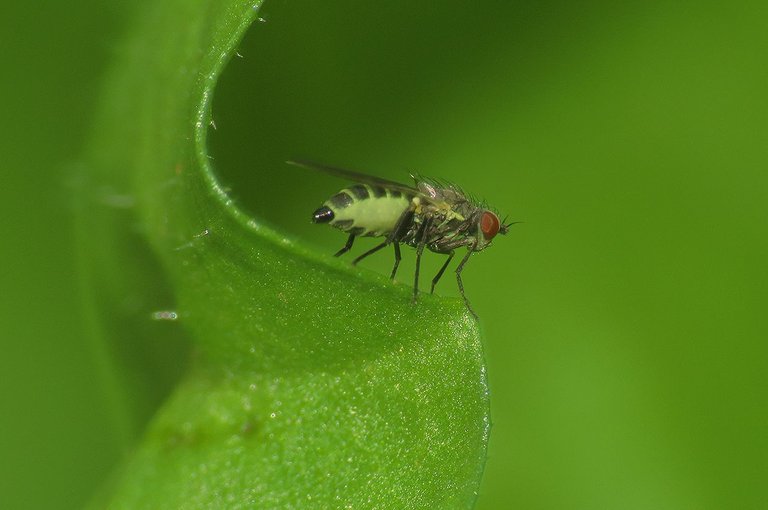
... but it belongs to a different family. The one called Agromyzidae. The name of the species is Cerodontha geniculata.
With this set of four photographs, you can take a break from the macro view by looking for at least twenty seconds without blinking at the juicy green leaves of the chicory. I sowed the chicory in a place that doesn't get much direct sunlight during the long summer day and therefore retains the humidity much better than the rest of the yard & garden.
The shade and humidity work great for the mosquitoes as well. I photographed two blood-sucking species for today's post. In this and the following photograph, you can see the Aedes albopictus, an invasive species native to Southeast Asia. The insect's abdomen was thin when this photograph was taken. Some minutes later ...
... it was partially transparent and swollen - a clear sign that this is a female.
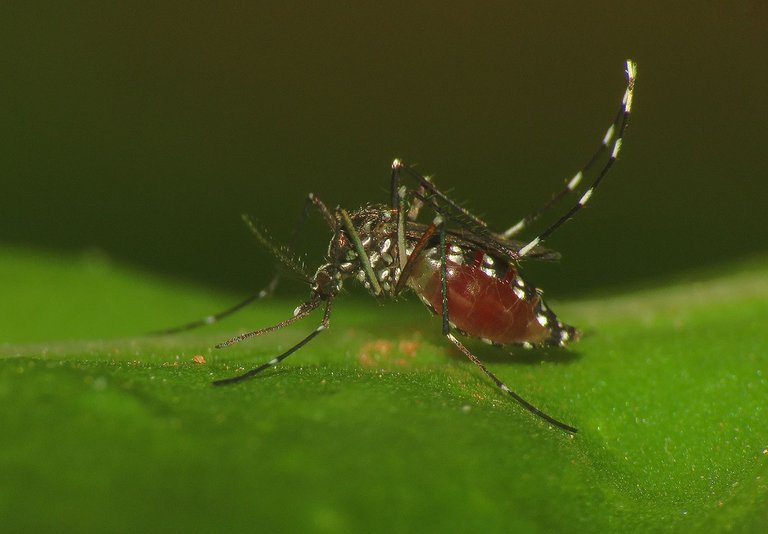
The red color that works visually very well with the green surroundings was provided by my blood.
Here you can see an Aedes cinereus female. This species is native to Europe.
This photograph can look a bit empty and pointless at first sight, but believe me, there is a potentially interesting tiny yellow dot right in its center. In the following shot ...
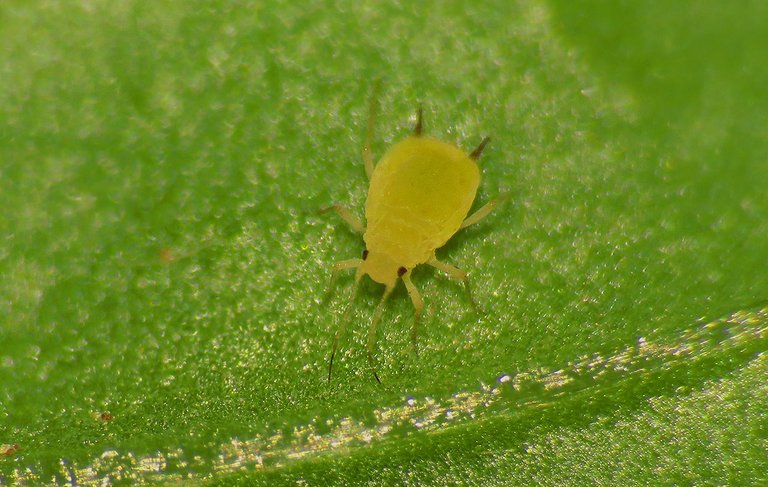
... I came closer with the macro lens. What was just a dot before is now clearly recognizable as an aphid. The Brachycaudus helichrysi aphid.

Here you can see a spider that I rarely encounter.
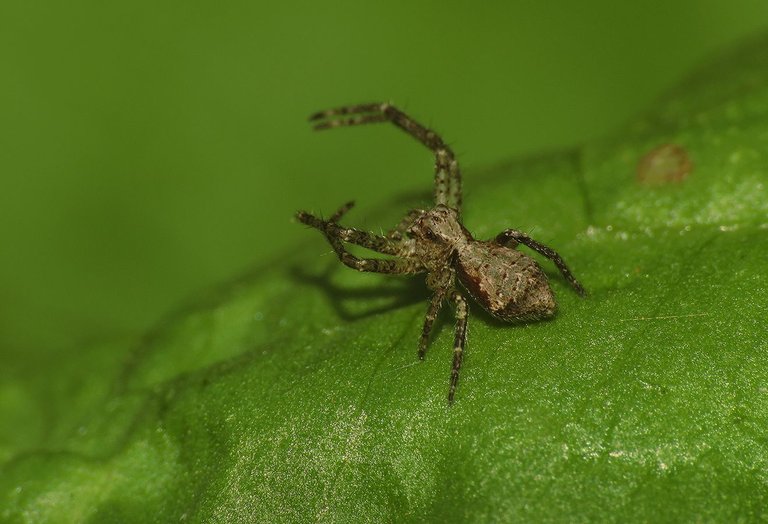
It's a crab spider, which means that belongs to the Thomisidae family. The name of the species is Tmarus piger.
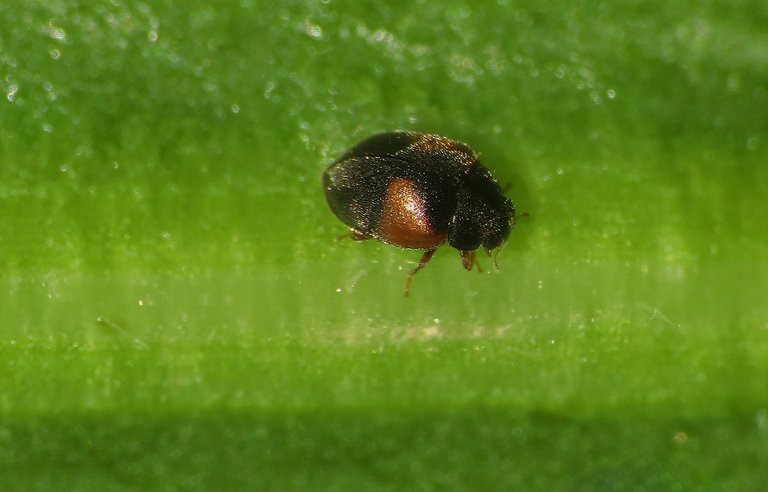
This lovely little ladybeetle is a tiny predator that can be found in many places all around my yard and garden.
The name of the species is Scymnus interruptus.
Adults and larvae eat prevalently aphids, but can also be occasionally seen predating the scale insects, mealybugs, and mites.
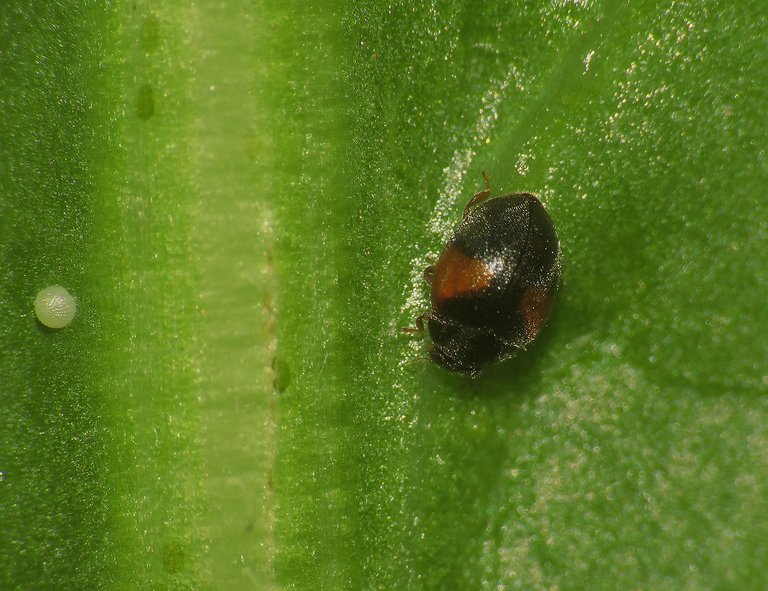
Here you can see the Scymnus interruptus ladybeetle next to a tiny egg of some insect, probably a butterfly.
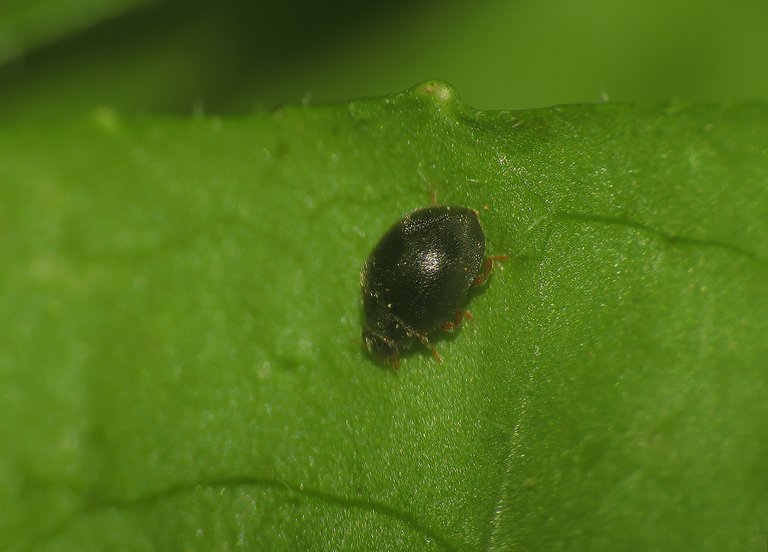
This even smaller, completely black ladybeetle is the Stethorus punctillum. The more specialized predator shown in this photograph hunts almost exclusively the mites.
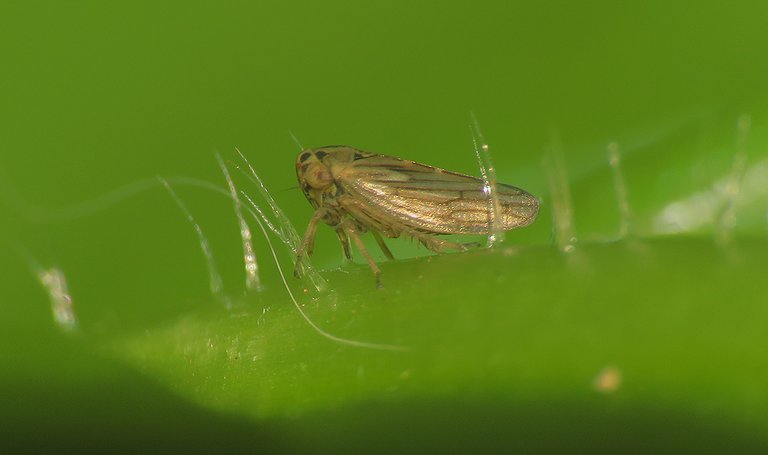
Here you can see the Anaceratagallia ribauti leafhopper. In this photograph, the feeding apparatus adapted for puncturing the plant tissue to get the nutrient liquids is clearly visible.
This predatory bug belongs to the Reduviidae family.
Its considerably longer proboscis is adapted for puncturing other insects, leafhoppers mostly. This is a young, wingless nymph. Adults are much bigger. This species, the Zelus renardii, is native to Central and North America but is now present in many other parts of the world including the Mediterranean parts of Europe. This was my first encounter with the Zelus renardii, I've never seen this insect before this summer.

This bug from the Miridae family is a herbivore that feeds by puncturing the plants. The name of the species is Orthops basalis.
You can see another tiny herbivore in this shot. This one feeds by chewing the leaf tissue. It's a beetle from the Chrysomelidae family. The name of the species is Longitarsus ochroleucus.
This insect resembles some kind of mosquito. Especially when seen buzzing around from a distance. It's a gnat. The name of the species is Leia bivittata. The family - Mycetophilidae. Gnats are small mosquito-like flies from the suborder Nematocera. Quite a few species that fit the aforementioned description, belonging to quite a few different families, are commonly known as gnats. In the following photograph ...
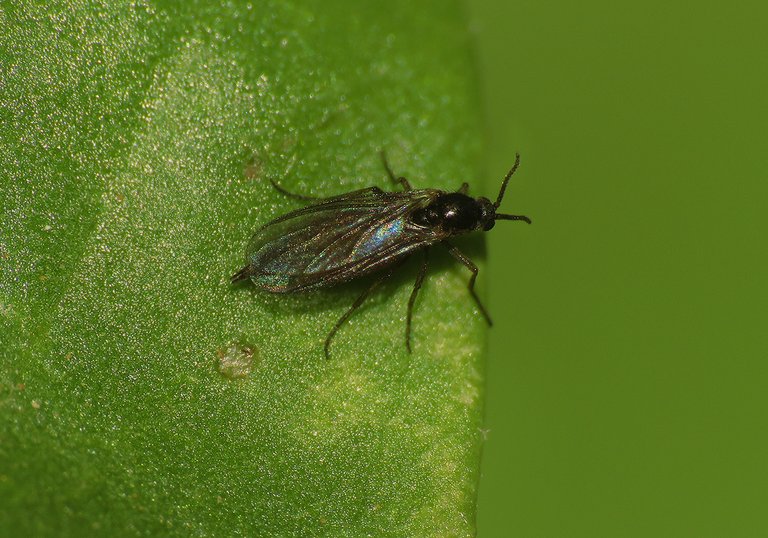
... you can see a different kind of gnat.

Can't tell you the name of the species but the family is definitely Sciaridae. Quite a few very similar-looking species from that family are present in this area making the identification very hard.
On one occasion, I saw a gnat of that same kind with an unusually elongated abdomen ...
... perform what can be described as some sort of ritual dance on the leaves of the green chicory in my backyard.
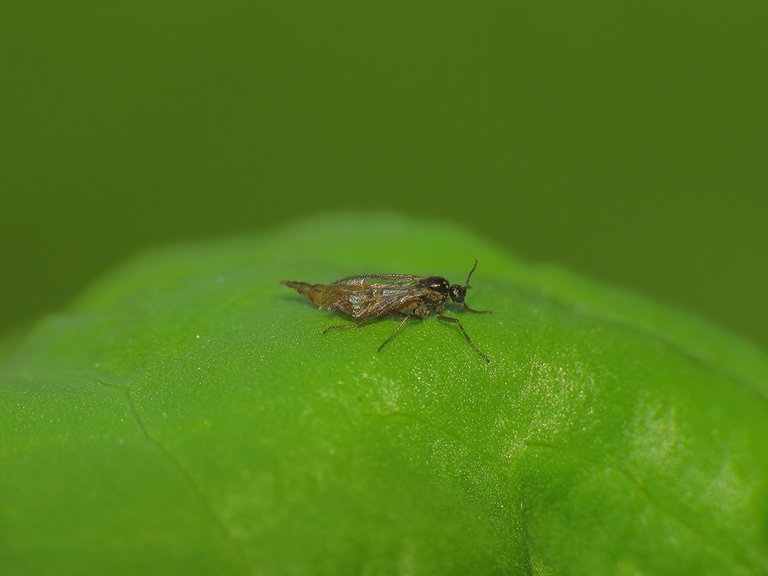
That behavior probably had something to do with mating, reproduction, and stuff like that. I mean, it looked that way, comparable with what I saw some other insects do, but who knows?
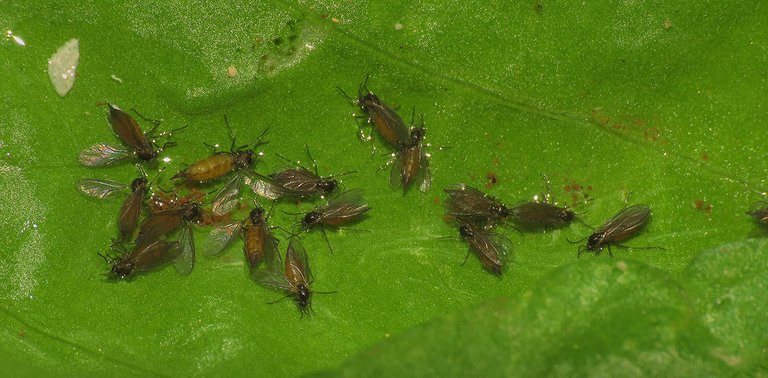
For the plants to thrive during the hot, dry summer, I have to water them from time to time, usually at night. The chicory grows in a shady, narrow space behind my house so the water that forms small shallow puddles on the green leaves doesn't evaporate as quickly as in sunny places.
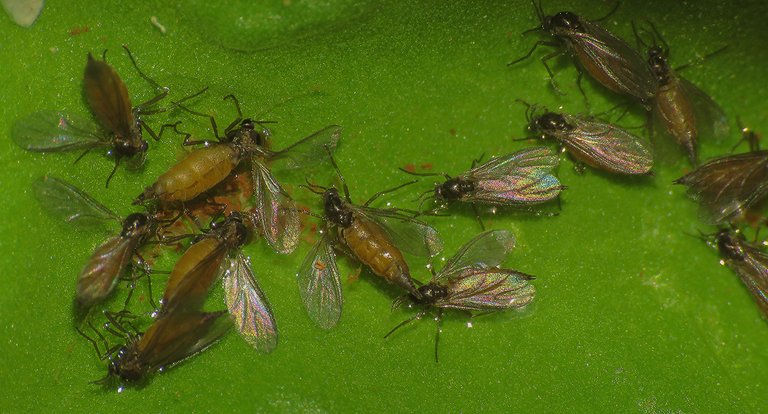
On one occasion, I found a bunch of dead gnats, drowned in one of those miniature puddles.
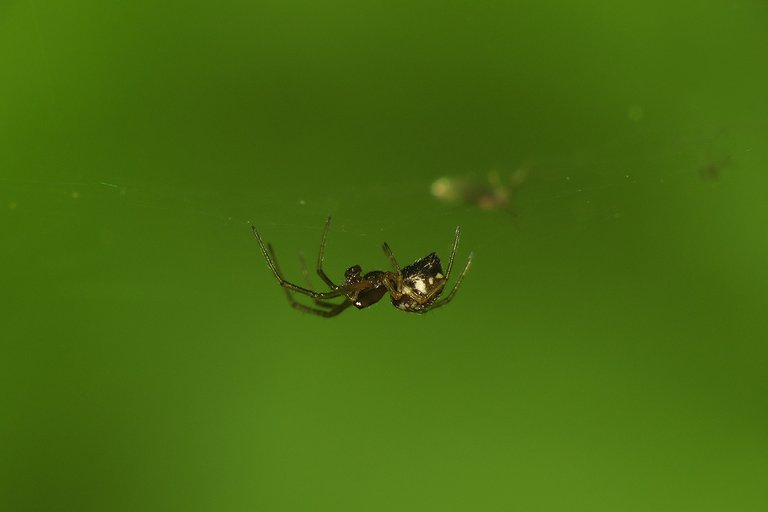
This tiny spider has built a horizontal web between two leaves.
Here, next to the spider, you can see the corpse of some kind of gnat caught in the silky trap.
In this enlargeable photograph, I came extremely close, with the macro lens. This is the juvenile Neriene peltata spider. The species belongs to the Linyphiidae family.

This Vespula germanica paper wasp looked like a real giant when compared to the spider. With the following photograph ...

... you can take another refreshing break from the macro view by staring at the picture for at least two minutes. Blinking is not only allowed but also encouraged this time.
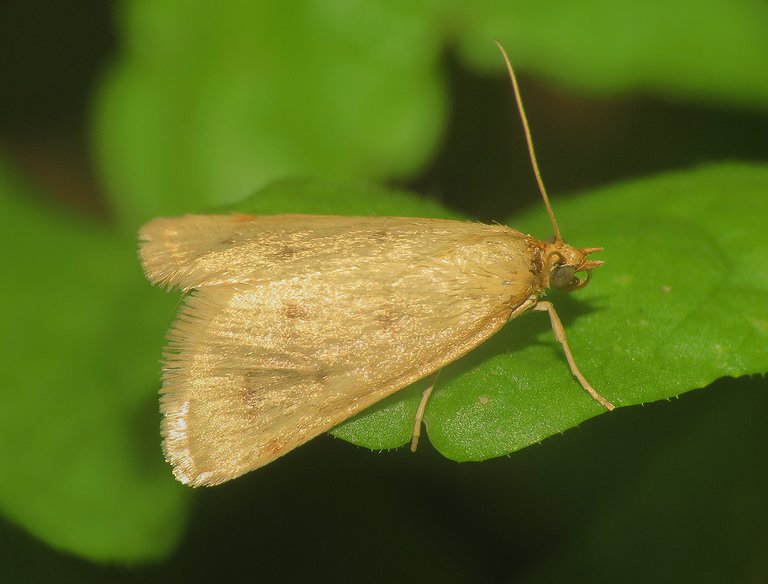
This moth belongs to the Crambidae family. The name of the species is Achyra nudalis.
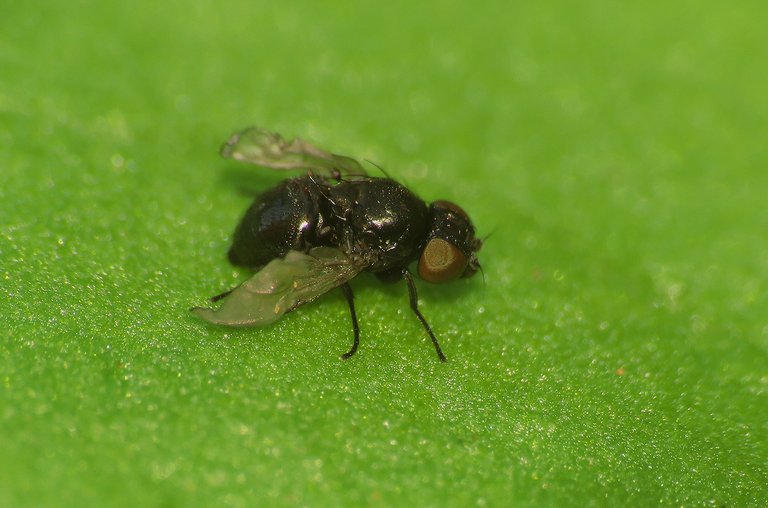
On the 4th of September, I found a black fly with malformed wings. In this case, I can't tell you the name of the species, the family, or anything else about the insect.
The fly couldn't fly but was very fast and agile when it came to running.
Here you can see a weevil, a beetle from the Curculionidae family.
The name of the species is Sitona hispidulus.
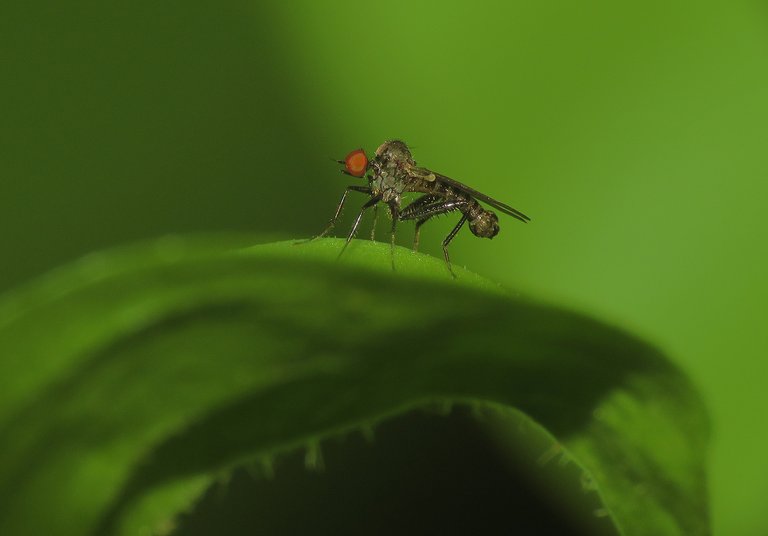
This is the Hybos culiciformis ...
... a small predatory fly from the Hybotidae family.

This is a plant louse. Lauritrioza alacris is the name of this species that feeds and reproduces on the nearby bay laurel tree.
AND THAT'S IT. HOPE YOU SURVIVED ALL THESE CREEPY CRAWLERS AND THE OVERABUNDANCE OF GREEN. AS ALWAYS HERE ON HIVE, THE PHOTOGRAPHS ARE MY WORK.
The following links will take you to the sites with more information about some of the protagonists of this post. I found some stuff about them there.
https://www.arachnophoto.com/en/salticidae-2/evarcha-jucunda/
https://en.wikipedia.org/wiki/Scaptomyza_pallida
https://en.wikipedia.org/wiki/Cerodontha
https://en.wikipedia.org/wiki/Aedes_albopictus
https://en.wikipedia.org/wiki/Aedes_cinereus
https://wiki.arages.de/index.php?title=Tmarus_piger
http://www.eakringbirds.com/eakringbirds4/insectinfocusscymnusinterruptus.htm
https://en.wikipedia.org/wiki/Stethorus_punctillum
https://www.britishbugs.org.uk/homoptera/Cicadellidae/Agallia_ribauti.html
https://en.wikipedia.org/wiki/Zelus_renardii
https://en.wikipedia.org/wiki/Orthops_basalis
https://en.wikipedia.org/wiki/Longitarsus_ochroleucus
https://bugguide.net/node/view/684262/bgimage
https://en.wikipedia.org/wiki/Sciaridae
https://en.wikipedia.org/wiki/Neriene_peltata
https://en.wikipedia.org/wiki/Sitona_hispidulus
https://en.wikipedia.org/wiki/Hybos_culiciformis
This last link can take you to the previous episode if you wish to go there.https://ecency.com/hive-140635/@borjan/summer-in-my-garden-episode-one-a-colorful-introduction-with-lady-beetles-and-tomatoes
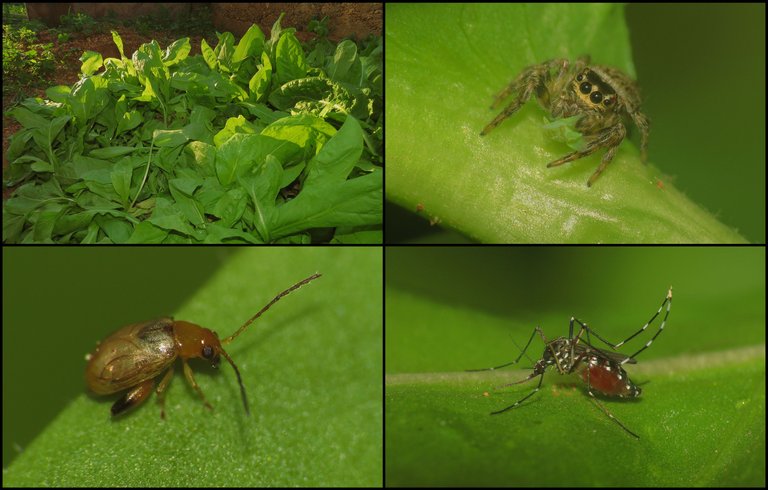
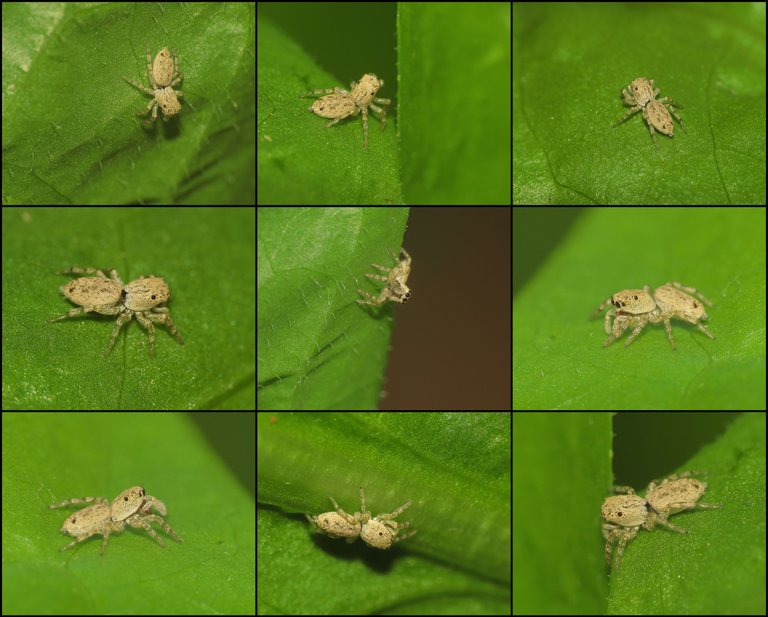
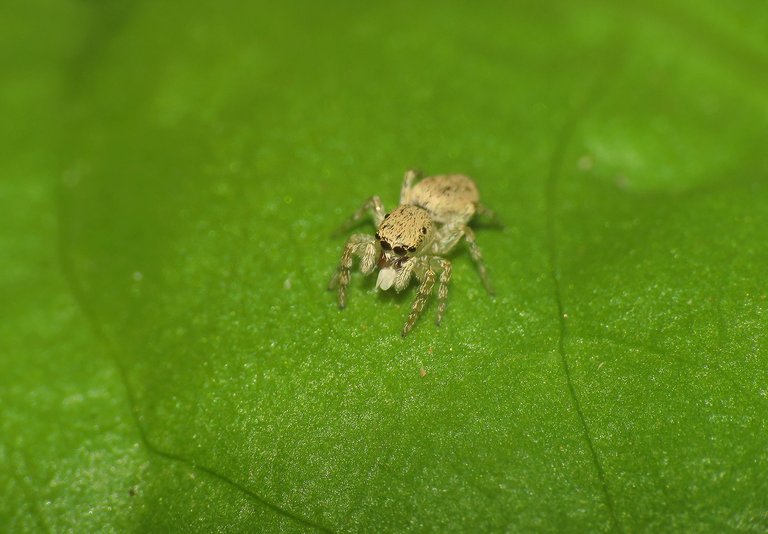
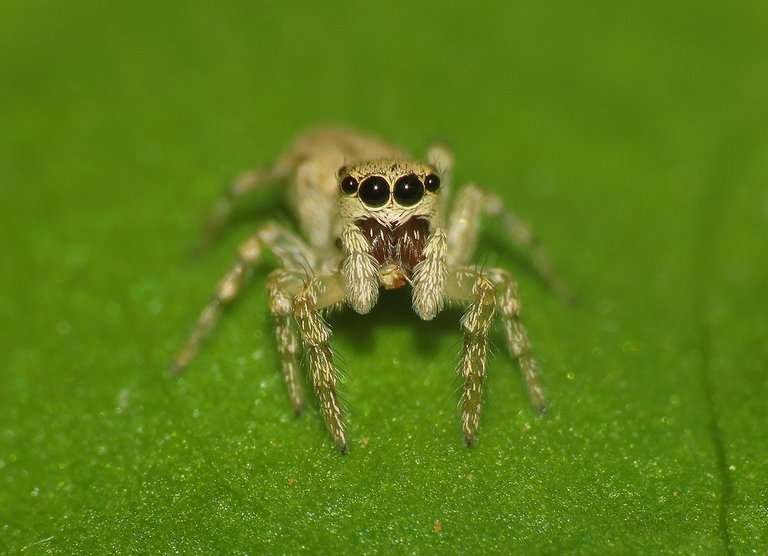

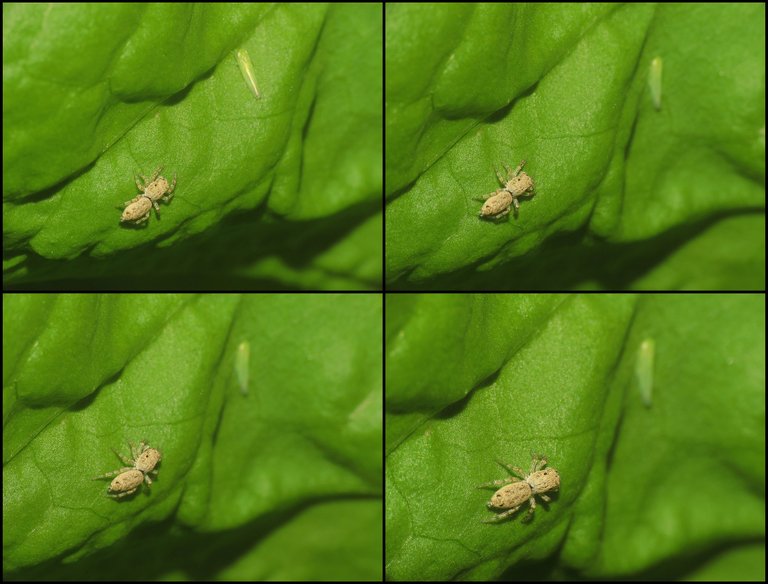

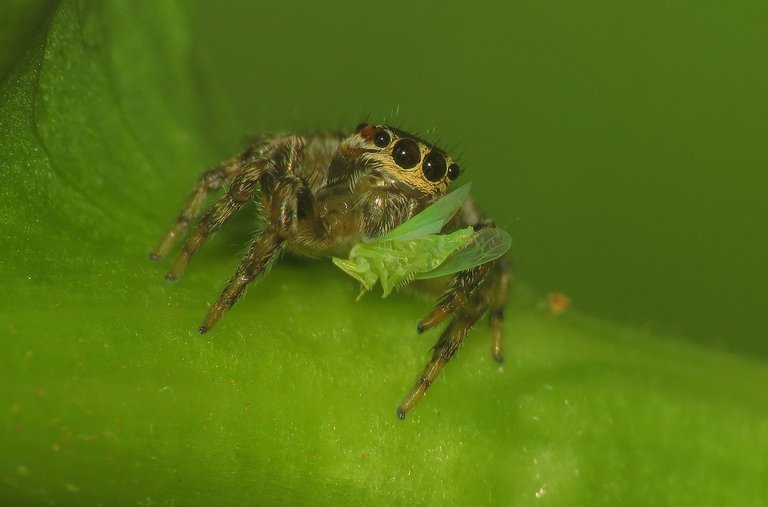
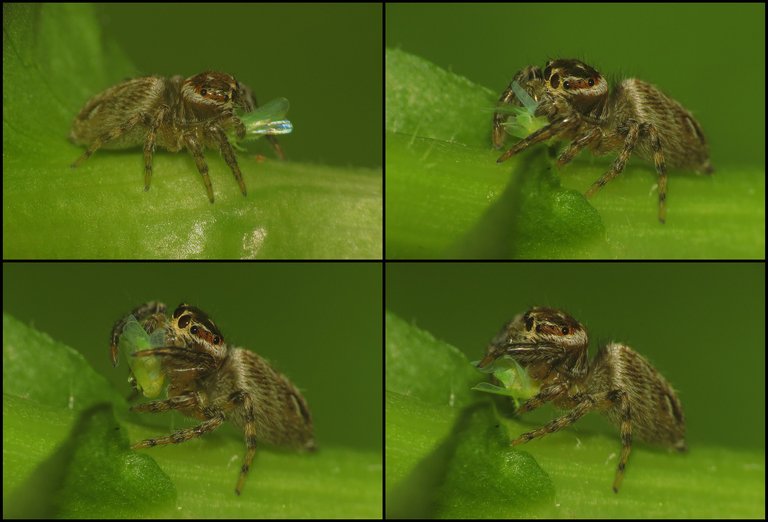

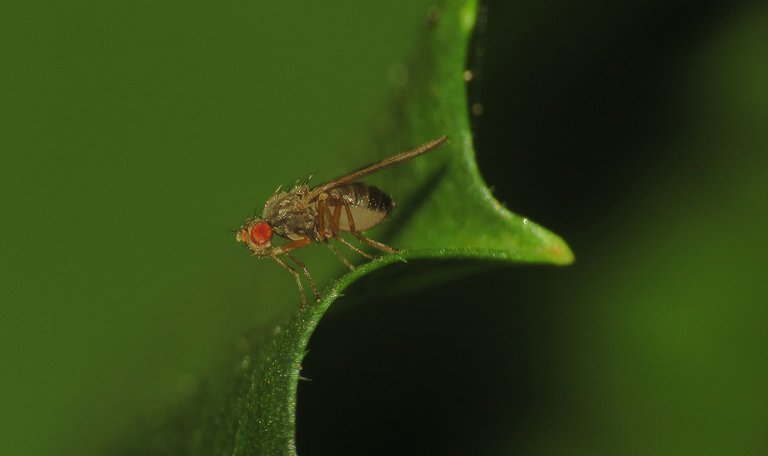


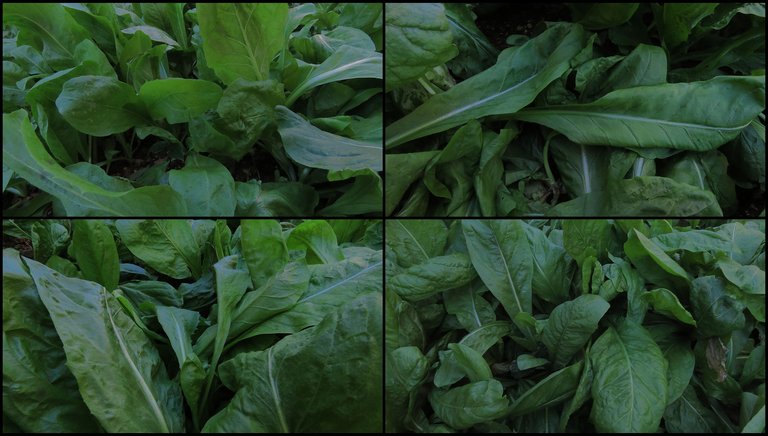
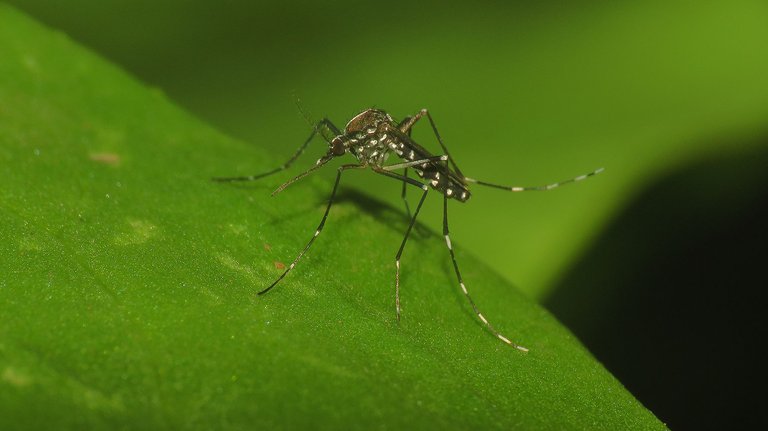
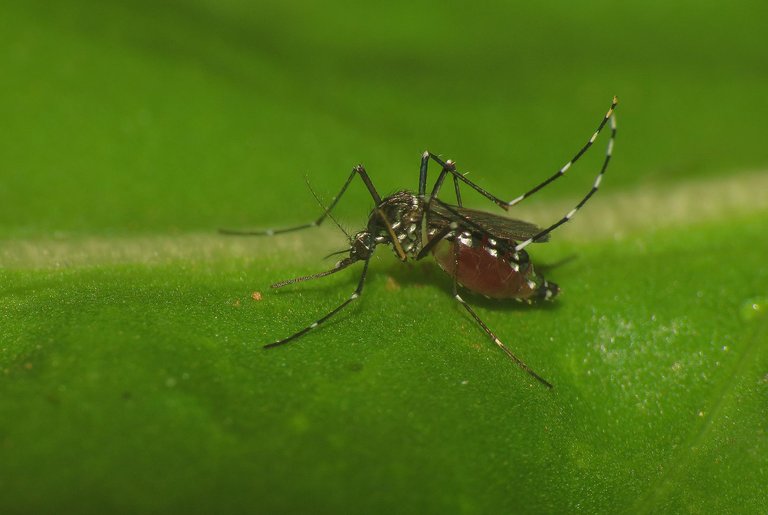
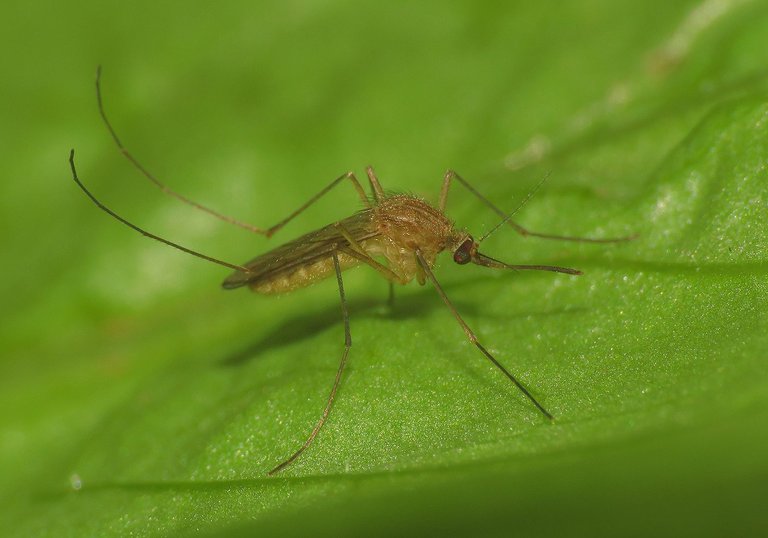



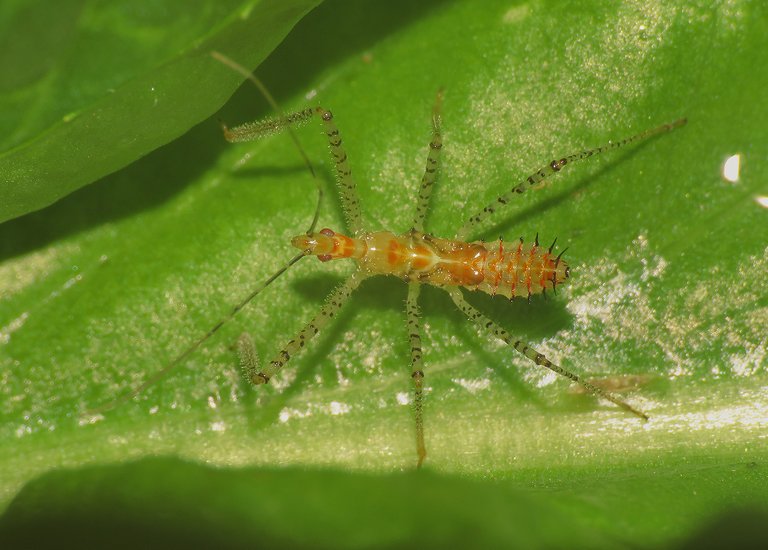
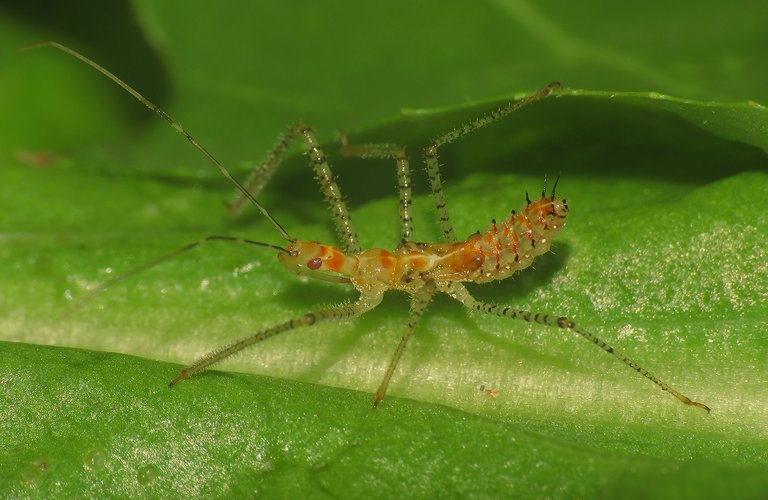

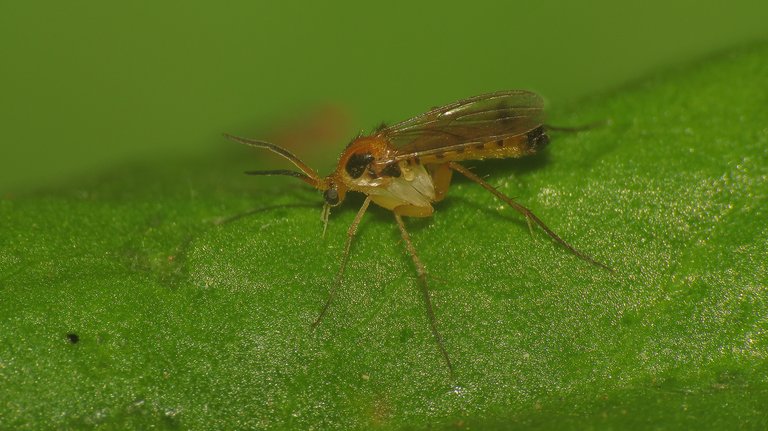
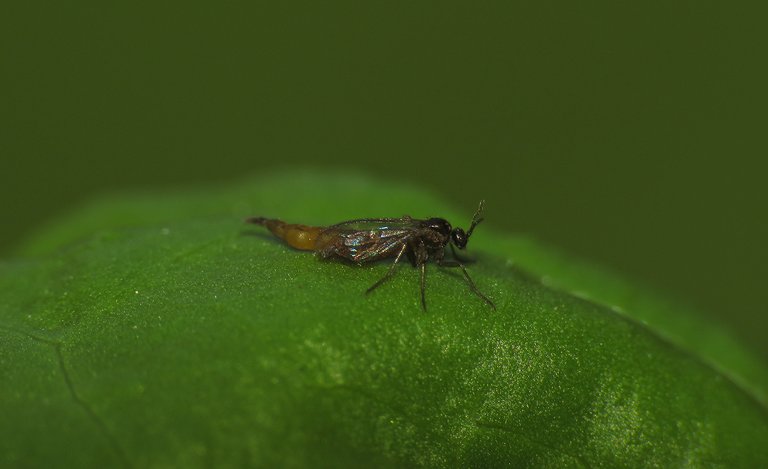
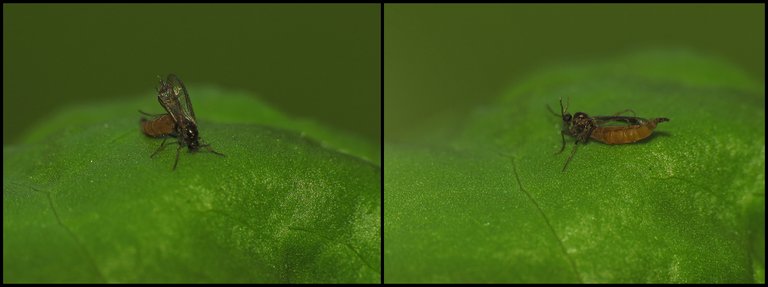
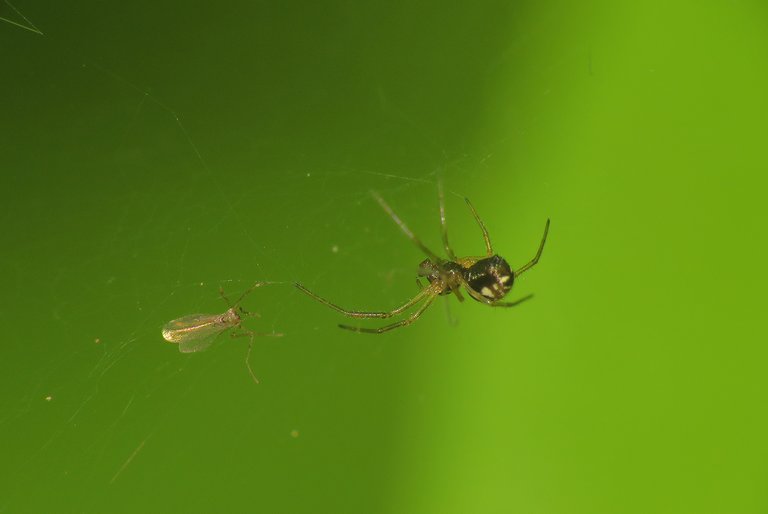
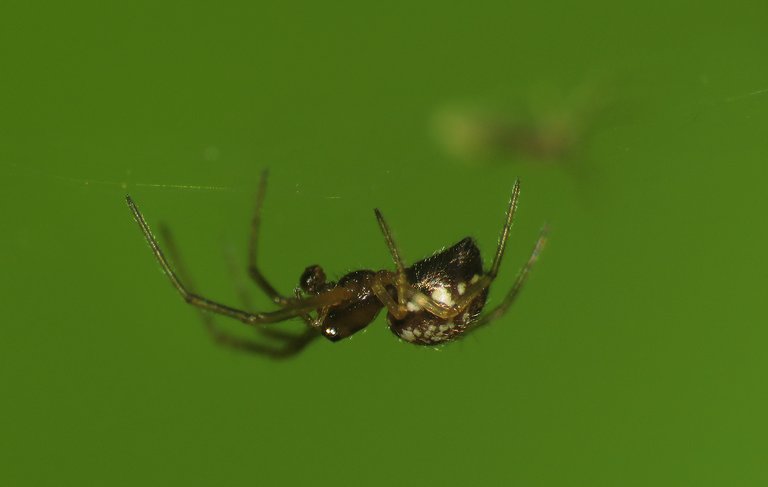
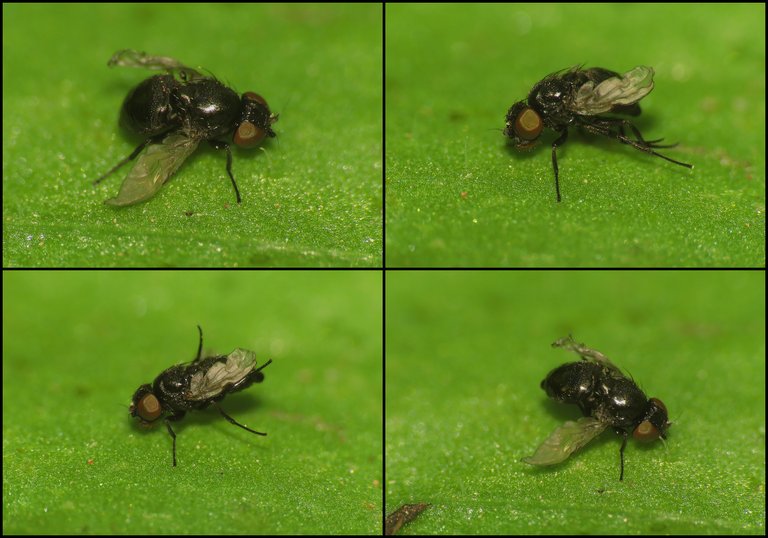
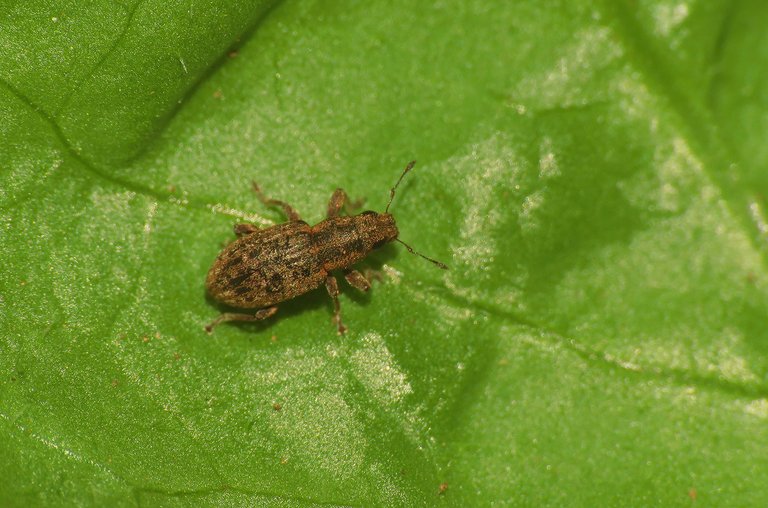
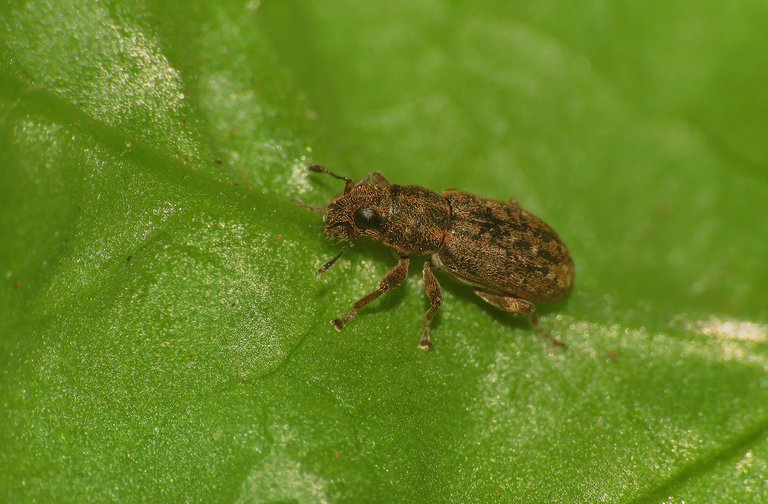
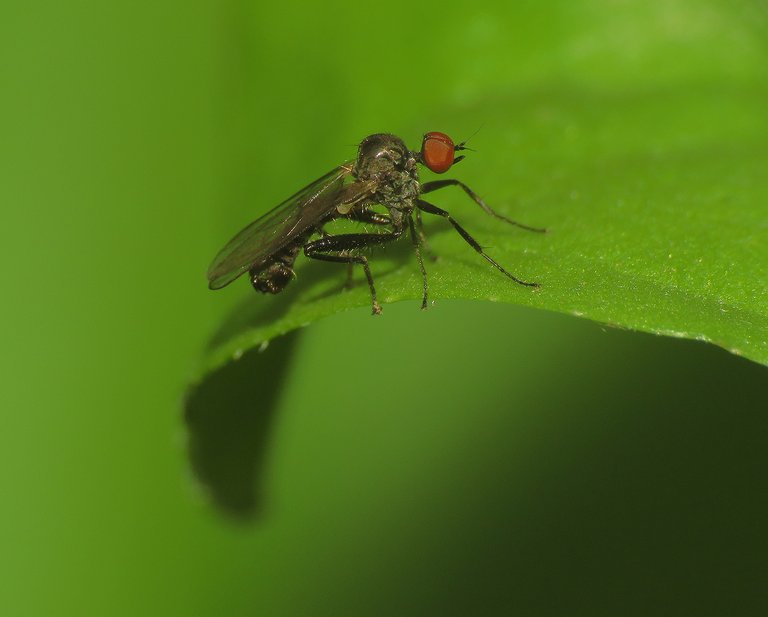
This post was shared and voted inside the discord by the curators team of Discovery-it in collaboration with Visual Shots community.
Discovery-it is also a Witness, vote for us here
Delegate to us for passive income. Check our 80% fee-back Program
:) You are a kind of naturalist, researched, photographer and with a creative and artistic touch!... Excellent post!
!discovery shots
!VSC
@jlinaresp has sent VSC to @borjan
This post was rewarded with 0.1 VSC to support your work.
Join our photography communityVisual Shots
Check here to view or trade VSC Tokens
Be part of our Curation Trail
@jlinaresp ha enviado VSC a @borjan
Éste post fue recompensado con 0.1 VSC para apoyar tu trabajo.
Únete a nuestra comunidad de fotografía Visual Shots
Consulte aquí para ver o intercambiar VSC Tokens
Se parte de nuestro Trail de Curación
Nature's favorite colour is GREEN !LOL but I don't like scary Spiders and Wasps (maybe that's just me). However, the other insects are more pretty and pleasing to the eye!
Awesome photos as always, and have a great day !VSC 👌
@fun.farms has sent VSC to @borjan
This post was rewarded with 0.1 VSC to support your work.
Join our photography communityVisual Shots
Check here to view or trade VSC Tokens
Be part of our Curation Trail
@fun.farms ha enviado VSC a @borjan
Éste post fue recompensado con 0.1 VSC para apoyar tu trabajo.
Únete a nuestra comunidad de fotografía Visual Shots
Consulte aquí para ver o intercambiar VSC Tokens
Se parte de nuestro Trail de Curación
lolztoken.com
He needed to get his grades up
Credit: reddit
$LOLZ on behalf of fun.farms
(1/10)
ENTER @WIN.HIVE'S DAILY DRAW AND WIN HIVE!@borjan, I sent you an
Discord Server.This post has been manually curated by @bhattg from Indiaunited community. Join us on our
Do you know that you can earn a passive income by delegating to @indiaunited. We share more than 100 % of the curation rewards with the delegators in the form of IUC tokens. HP delegators and IUC token holders also get upto 20% additional vote weight.
Here are some handy links for delegations: 100HP, 250HP, 500HP, 1000HP.
100% of the rewards from this comment goes to the curator for their manual curation efforts. Please encourage the curator @bhattg by upvoting this comment and support the community by voting the posts made by @indiaunited.
Amazing stand of chicory! Wish mine grew like that. Love the spider "with its cute extraterrestrial eyes." The body and leg markings of the Zelus renardii are fascinating. and I loved all the green. :))
This photo of a spider that seems to be looking at the camera is the winner in my opinion :-)
The mosquito looked very happy, his stomach was very full
🙂
😉
Looking at those green leaves is very refreshing. I love it.
I'm interested in the mosquitoes you photograph, it seems he just finished breakfast..🤣 @borjan
🙂
Your pictures are so beautiful and sharp, good job.
you get a lot more macro shots in one place than I can ever imagine my friend.
I know how hard it can be to photograph a jumping spider since its constantly on the move searching for the prey.
!LUV !PIZZA !VSC
@ekavieka has sent VSC to @borjan
This post was rewarded with 0.1 VSC to support your work.
Join our photography communityVisual Shots
Check here to view or trade VSC Tokens
Be part of our Curation Trail
@ekavieka ha enviado VSC a @borjan
Éste post fue recompensado con 0.1 VSC para apoyar tu trabajo.
Únete a nuestra comunidad de fotografía Visual Shots
Consulte aquí para ver o intercambiar VSC Tokens
Se parte de nuestro Trail de Curación
(1/5) sent LUV. | connect | community | HiveWiki | NFT | <>< daily@borjan, @ekavieka
! help(no space) to get help on Hive. InfoNot the insect caught my attention but I actually love how green the plants are
It shows that they are very healthy
You have found some beautiful insect in your garden. You have photographed those insect beautifully. Thanks for sharing
This is amazing. You really took your time to have these perfect captures. Nature is full of wonders.
Cheers
Of all the amazing insects out there.. to this day, a jumping spider remains among one of my ultimate favourites. I can never get enough of how cute these little ones are. I've mentioned before how observant they are. They are so so so so so dope! Cool post mate. The jumping spider was the star of the show for me lmao.
Well @borjan if you ask me, I will tell you that "hell, yes I love this green overdose you brought today" lol... earnestly it's beautiful and unique, your photos are breathing nature☺️
I'm not aware of the plants but are the leaves edible? The shots are amazing.
Yes. The leaves are bitter but bitter in a very tasty way. And they are soft too.
#hive #posh
Hehe, this is really an overdose of green. That spider is confident, see the way it was looking at me.
Summer pictures never disappoint
I like squirrels. They have so much innocent looks but capturing their image is a great and difficult task.
The look of the many eyes of this tarantula alarmed me, lol, as did the sight of a very fat mosquito, which had a hearty lunch and is ready to go to the tarantula’s festive table, but the lacewing came to the holiday first :)
!ALIVE
You Are Alive so I just staked 0.1 $ALIVE to your account on behalf of @ peter-stone. (3/10)@borjan!
The tip has been paid for by the We Are Alive Tribe
 through the earnings on @alive.chat, feel free to swing by our daily chat any time you want, plus you can win Hive Power (2x 50 HP) and Alive Power (2x 500 AP) delegations (4 weeks), and Ecency Points (4x 50 EP), in our chat every day.
through the earnings on @alive.chat, feel free to swing by our daily chat any time you want, plus you can win Hive Power (2x 50 HP) and Alive Power (2x 500 AP) delegations (4 weeks), and Ecency Points (4x 50 EP), in our chat every day.
All these insects looks so beautiful and amazing. I always like to know more about insect's and other natural thing's.
$PIZZA slices delivered:
(1/5) @ekavieka tipped @borjan